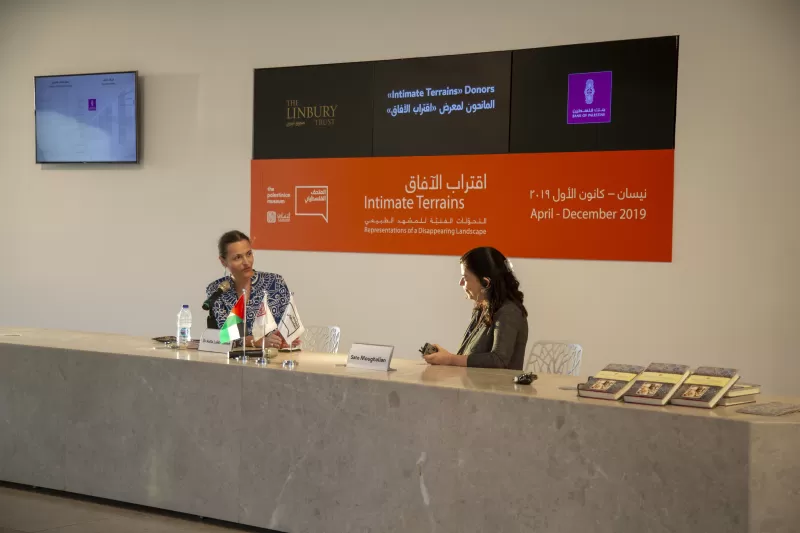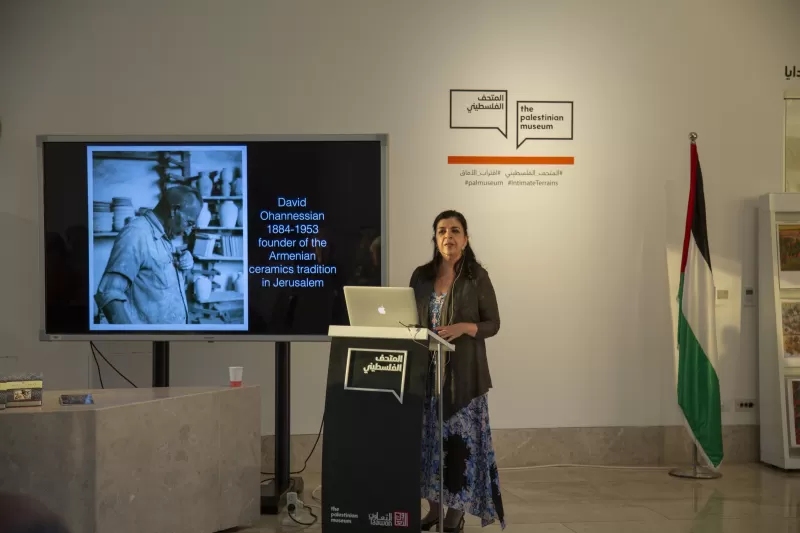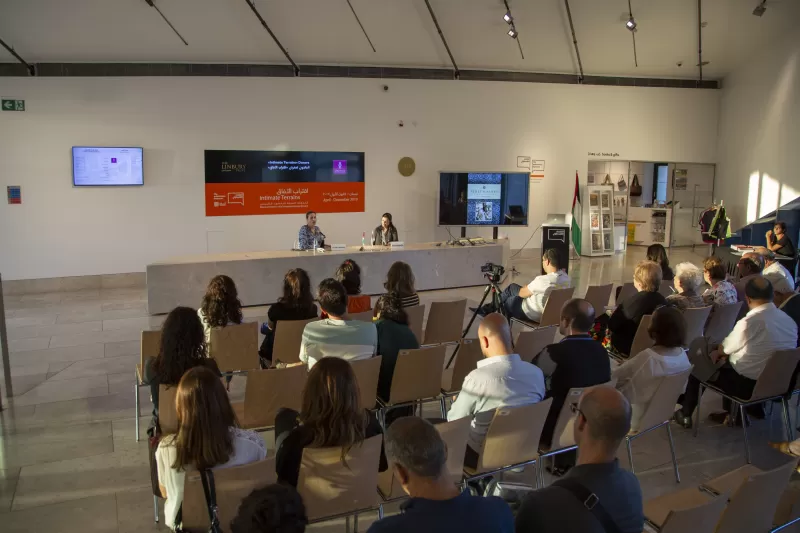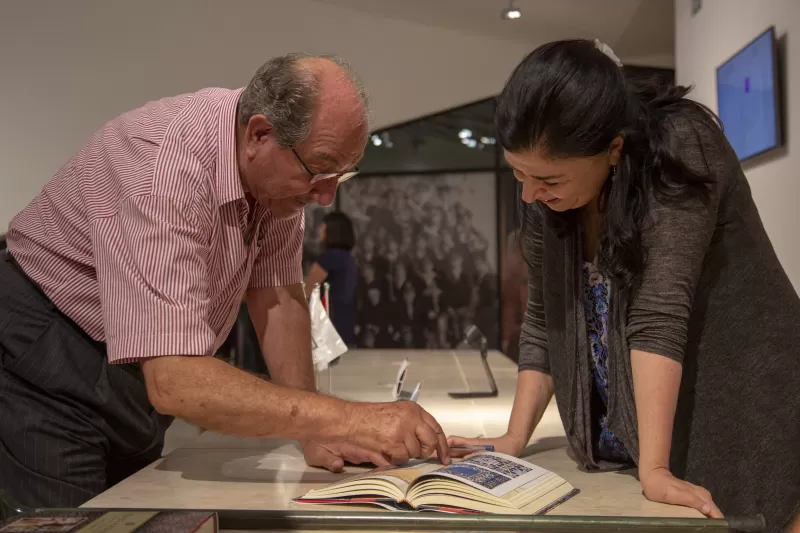Birzeit, 3/9/2019: The Palestinian Museum organised a number of book launch events around Armenian American researcher and flutist Sato Moughalian’s new book Feast of Ashes: The Life and Art of David Ohannessian at the Museum premises, in Jerusalem’s American Colony Hotel (in partnership with the Educational Bookshop), and in Haifa (in partnership with the Arab Culture Association).
In her book, Moughalian explores her grandfather David Ohannessian’s (1884–1953) life journey. The book tells the story of the establishment of the art of Jerusalem Armenian ceramics in the city, as the author traces her grandfather’s works in churches, houses, and on the walls of the Old City, among other locations.
David Ohannessian is considered the founder of the Jerusalem Armenian ceramics art. He was a master of the renowned Kütahya ceramics tradition in Ottoman Turkey, where in 1907 he founded one of the city’s three ceramics workshops. During his career there, he adorned buildings, tiled monumental mihrabs, and renovated and created the tiling of important mosques, tombs, and palaces in the city as well as in Cairo, Constantinople, Bursa, Damascus, Konya, and Mecca. He earned wide acclaim as an expert in historical renovation and exported his works to England and France, winning a gold medal at the 1910 Bursa Trade Fair.
An important landmark in Ohannessian’s career came between 1911 and 1913 when he was commissioned to create a major ceramic tile installation by British MP Mark Sykes at his home in Yorkshire, England. The work earned the admiration of many visiting diplomats and British officials.
Ohannessian was arrested and deported from Turkey to Aleppo where he lived as a refugee for three years during WWI. In late 1918, he met once more with Sykes who introduced him to Ronald Storrs, the Military Governor of Jerusalem. Upon an invitation by British authorities to consult on the planned restoration of the Dome of the Rock, Ohannessian arrived in Jerusalem later that year.
Ohannessian’s time in Jerusalem saw the introduction and flourishing of his artform in the city. During the thirty years he spent in Palestine (1918–1948), he established a workshop on the Via Dolorosa in the Old City, trained apprentices (many orphans among them), and decorated structures designed by both British and Palestinian architects. While he introduced to Jerusalem the Ottoman tradition of exterior architectural tile decoration, he imbued it with a uniquely Palestinian character through his choices of colours and local materials.
He built a successful international trade, exporting his ceramic works worldwide and exhibiting in major expositions including the 1925 Paris Exposition of Decorative Arts, the 1931 Paris Colonial Exposition, and the 1933–34 Chicago World’s Fair.
Many of David Ohannessian’s major ceramic installations in Jerusalem are still standing in the American Colony, St. Andrew's Church, the former St. John's Ophthalmic Hospital, St. Saviour's Church, the British and Foreign Bible Society, the Rockefeller Archaeological Museum, a number of private homes (especially in Talbiyeh and Sheikh Jarrah), and apartment buildings, in addition to public and private works in Europe, the Middle East, and the United States.
Ohannessian is regarded as one of the last ceramics masters who maintained the time-honored traditional methods of this craft into the 1940s. His Palestinian ceramics were distinct in their vibrant glazing and highly saturated colors.
Sato Moughalian says, ‘To me, the significance of this book lies in exploring the life of the pioneer of Jerusalem Armenian ceramics, an artform that has become a distinguishing feature of Jerusalem known around the world, and tracing its trajectory from the late Ottoman Empire. This book also corrects a number of errors in the art historical narrative of the establishment of the Jerusalem Armenian ceramic art and fills gaps in the story of Ohannessian’s life.
For her part, Director General of the Palestinian Museum, Dr Adila Laïdi-Hanieh notes, ‘We host this book launch as part of our effort to museify Palestinian cultural practices. David Ohannessian is the originator of a major Palestinian art and craft, which is now shorthand for Palestinian and Jerusalemite visual identity: Its tile panels and pottery, and a contemporary avatar, the popular Hebron ceramics. As Ohannessian’s career was cut short by his 1948 exile and the loss of his atelier, his tradition lives on in Palestine through the descendants of his Armenian workers, apprentices, and via the many Palestinian collectors of his rare pieces.’



